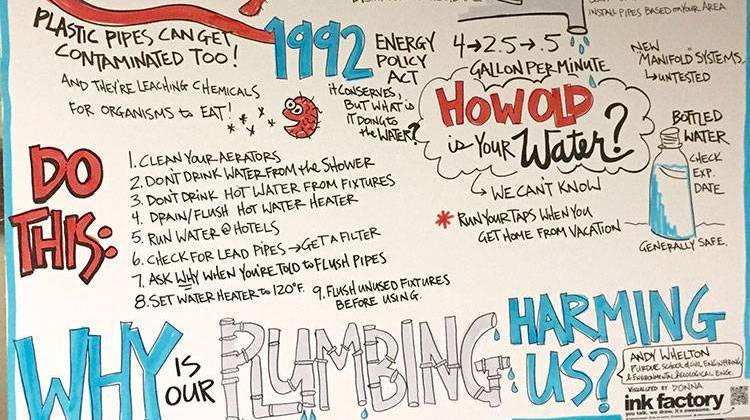
Purdue's Dawn or Doom technology conference explored whether tech is advancing faster than our ability to understand it.
Nick Janzen/IPBSIndiana ranks 42 in energy efficiency nationwide, down from a peak of 27 in 2013. But there’s a hidden cost associated with efficiency measures — public health.
Speaking at Purdue University’s Dawn or Doom technology conference, engineering professor Andrew Whelton has a seemingly counterintuitive message.
“Many of the technologies being used in plumbing systems, that are resulting in water and energy savings, we do not really understand the potential for them to contribute to disease in buildings,” Whelton says.
There are a couple of reasons for that. Not much is known about the effects new pipe materials, like plastics, can have on health. And “low flow” water efficiency measures increase the amount of time water sits in a pipe. That allows bacteria to grow and heavy metals to leach into the water.
But there are steps people can take to reduce risk.
“Everyone in the U.S. should remove their aerators and clean them at least once,” Whelton says.
Whelton has found slugs of lead before in his aerators, which regulate the flow of water from the main service line into people’s homes. He says flushing stagnate water for about 15 minutes can also reduce risk.
 DONATE
DONATE







 Support WFYI. We can't do it without you.
Support WFYI. We can't do it without you.